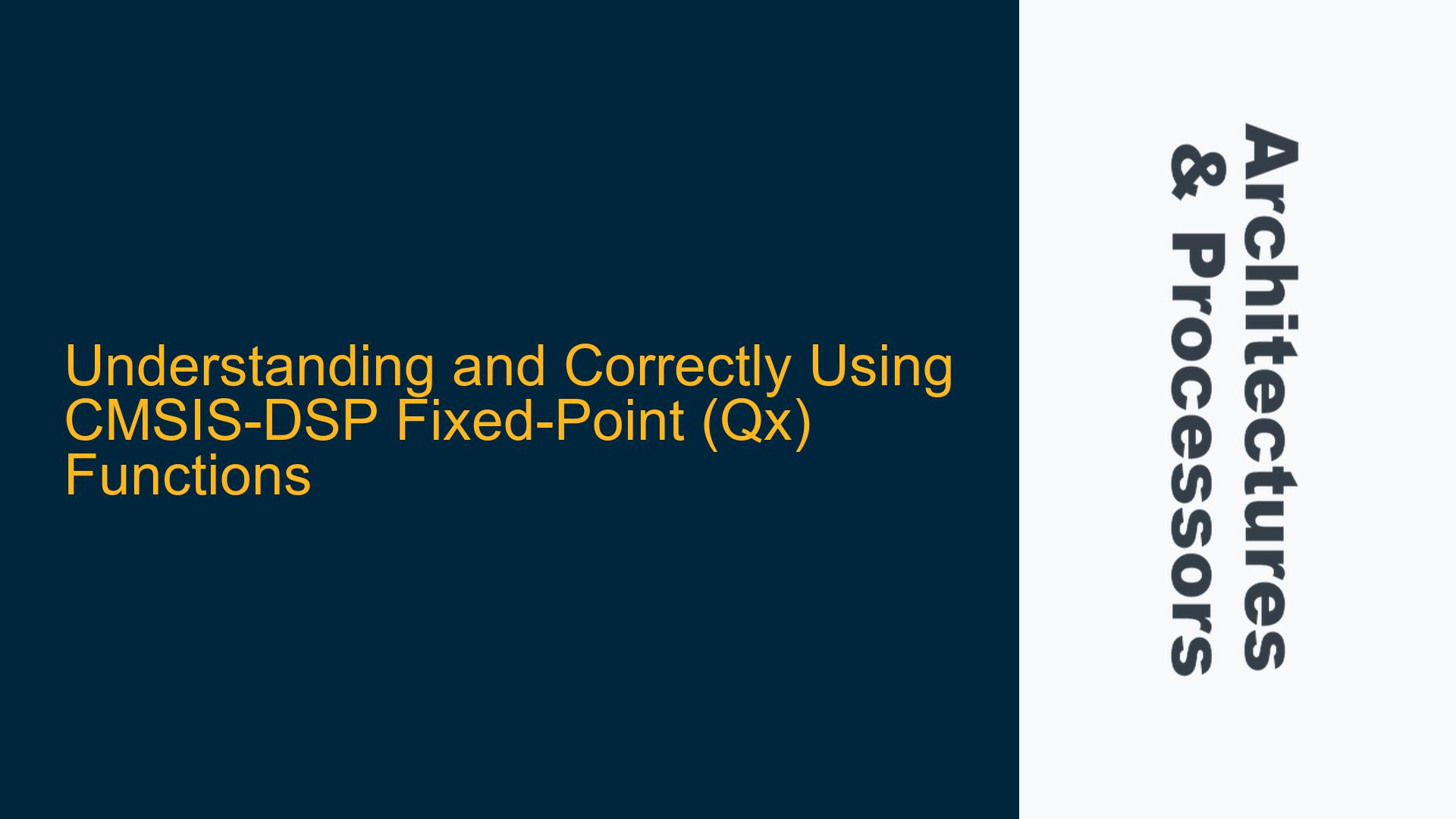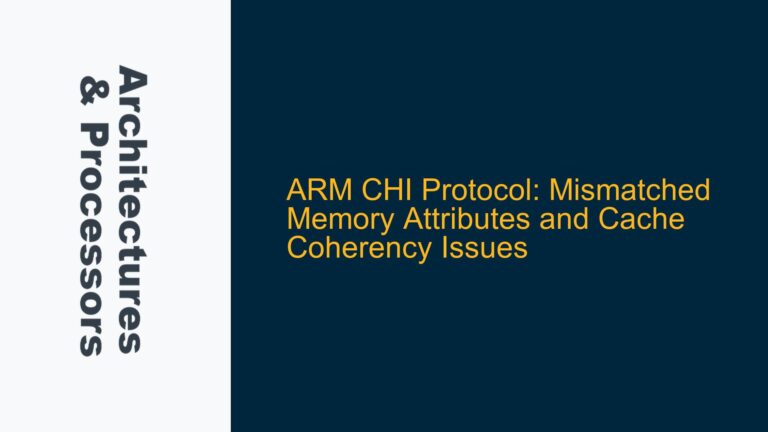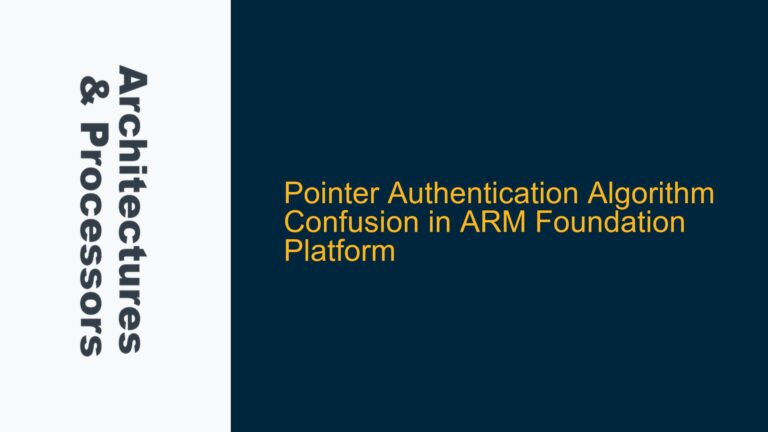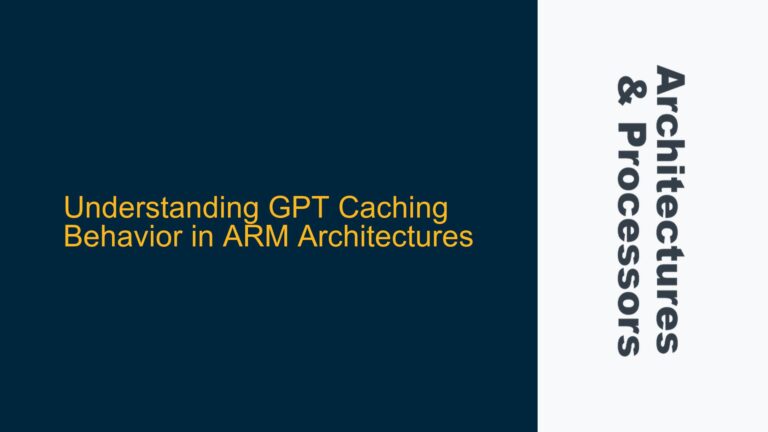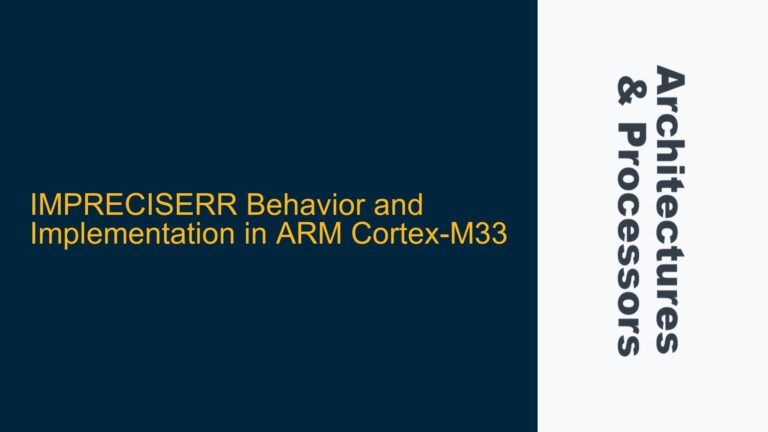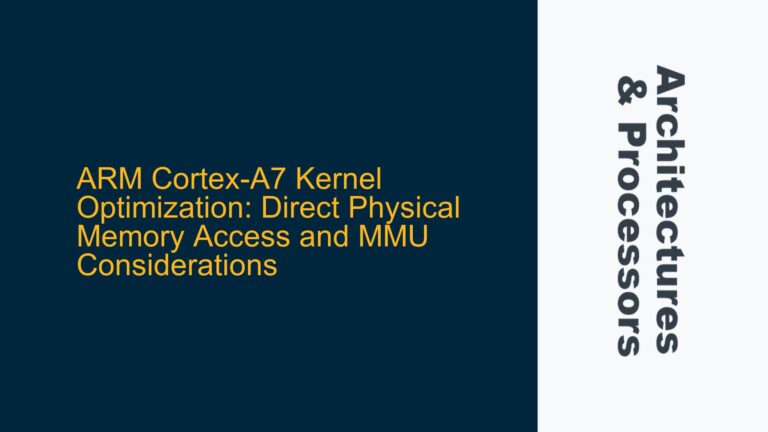ARM Cortex-M CMSIS-DSP Fixed-Point Arithmetic and Saturation Behavior
The ARM Cortex-M series microcontrollers are widely used in embedded systems due to their efficiency and performance. One of the key libraries provided by ARM for these processors is the CMSIS-DSP library, which offers a suite of digital signal processing (DSP) functions. Among these functions are those that operate on fixed-point numbers, specifically in Q7, Q15, and Q31 formats. These formats represent numbers in a fixed-point notation where the range and precision are defined by the number of fractional bits. Understanding how to correctly use these functions, particularly in the context of matrix-vector multiplications, is crucial for ensuring accurate and efficient computations.
Fixed-point arithmetic is a method of representing fractional numbers using integers. In the Q-format notation, a number is represented as Qm.n, where m is the number of integer bits and n is the number of fractional bits. For example, Q1.7 format means there is 1 integer bit and 7 fractional bits, allowing the representation of numbers in the range [-1, +1). The CMSIS-DSP library uses Q7, Q15, and Q31 formats, which correspond to Q1.7, Q1.15, and Q1.31 respectively. These formats are chosen to optimize the performance of DSP operations on ARM Cortex-M processors, which are often used in resource-constrained environments.
When performing matrix-vector multiplications using CMSIS-DSP functions like arm_mat_vec_mult_q7, arm_mat_vec_mult_q15, and arm_mat_vec_mult_q31, it is essential to understand the implications of using fixed-point arithmetic. The primary concern is the potential for saturation, where the result of a computation exceeds the representable range of the fixed-point format. Saturation can lead to loss of information and incorrect results, which is particularly problematic in DSP applications where accuracy is critical.
Fixed-Point Arithmetic and Saturation in CMSIS-DSP Functions
The CMSIS-DSP library is designed to handle fixed-point arithmetic efficiently, but it requires careful consideration of the input and output ranges to avoid saturation. The Q7, Q15, and Q31 formats used in the library have limited dynamic ranges, which means that the results of arithmetic operations must be carefully managed to stay within these ranges. For example, in Q7 format, the range is [-1, +1), and any result outside this range will be saturated to the nearest representable value.
When performing matrix-vector multiplications, the result of each multiplication and accumulation operation can easily exceed the range of the fixed-point format. For instance, multiplying two Q7 numbers (each in the range [-1, +1)) can result in a product in the range [-1, +1], but when accumulating multiple such products, the sum can easily exceed this range. The CMSIS-DSP functions handle this by saturating the results to the nearest representable value, but this can lead to significant errors if the input values are not scaled appropriately.
To avoid saturation, it is often necessary to scale the input values so that the result of the computation remains within the representable range of the fixed-point format. This can be achieved by either reducing the magnitude of the input values or by using a higher precision format (e.g., Q15 or Q31) for intermediate calculations. However, scaling the input values can also reduce the precision of the computation, so a balance must be struck between avoiding saturation and maintaining sufficient precision.
Implementing Proper Scaling and Precision Management in CMSIS-DSP
To correctly use the CMSIS-DSP fixed-point functions, it is essential to implement proper scaling and precision management. This involves understanding the range and precision requirements of the specific application and adjusting the input values and intermediate calculations accordingly. The following steps outline a systematic approach to managing fixed-point arithmetic in CMSIS-DSP functions:
-
Determine the Range and Precision Requirements: The first step is to determine the range and precision requirements of the application. This involves understanding the maximum and minimum values that the input data can take and the required precision for the output. For example, if the input data is in the range [-1, +1) and the output needs to be accurate to within 0.001, then a Q15 or Q31 format may be necessary to achieve the required precision.
-
Scale the Input Values: Once the range and precision requirements are understood, the next step is to scale the input values so that the result of the computation remains within the representable range of the fixed-point format. This can be done by multiplying the input values by a scaling factor that reduces their magnitude. For example, if the input values are in the range [-10, +10), they can be scaled by a factor of 0.1 to bring them into the range [-1, +1).
-
Use Higher Precision for Intermediate Calculations: In some cases, it may be necessary to use a higher precision format for intermediate calculations to avoid saturation. For example, if the result of a matrix-vector multiplication is likely to exceed the range of the Q7 format, it may be necessary to use the Q15 or Q31 format for the intermediate calculations and then scale the result back to the Q7 format.
-
Implement Saturation Handling: Even with proper scaling and precision management, there may still be cases where the result of a computation exceeds the representable range of the fixed-point format. In such cases, it is important to implement saturation handling to ensure that the result is clamped to the nearest representable value. The CMSIS-DSP library provides functions for handling saturation, such as
__SSATand__USAT, which can be used to clamp the result to the desired range. -
Verify the Results: Finally, it is important to verify the results of the computation to ensure that they are within the expected range and precision. This can be done by comparing the results with those obtained using floating-point arithmetic or by using a reference implementation. Any discrepancies should be investigated and corrected by adjusting the scaling factors or precision management techniques.
By following these steps, it is possible to correctly use the CMSIS-DSP fixed-point functions and avoid the pitfalls of saturation and precision loss. The key is to carefully manage the range and precision of the input values and intermediate calculations, and to implement proper saturation handling to ensure accurate and reliable results.
Practical Example: Matrix-Vector Multiplication Using CMSIS-DSP
To illustrate the concepts discussed above, let’s consider a practical example of performing matrix-vector multiplication using the CMSIS-DSP library. Suppose we have a 3×3 matrix and a 3×1 vector, both in Q7 format, and we want to compute the product using the arm_mat_vec_mult_q7 function.
-
Define the Matrix and Vector: First, we define the matrix and vector in Q7 format. The matrix is defined as a 3×3 array of Q7 values, and the vector is defined as a 3×1 array of Q7 values. For example:
q7_t matrix[3][3] = { {0x40, 0x20, 0x10}, // Q7 values: 0.5, 0.25, 0.125 {0x20, 0x40, 0x20}, // Q7 values: 0.25, 0.5, 0.25 {0x10, 0x20, 0x40} // Q7 values: 0.125, 0.25, 0.5 }; q7_t vector[3] = {0x40, 0x40, 0x40}; // Q7 values: 0.5, 0.5, 0.5 -
Initialize the CMSIS-DSP Matrix Instance: Next, we initialize the CMSIS-DSP matrix instance using the
arm_mat_init_q7function. This function takes a pointer to the matrix data, the number of rows and columns, and a pointer to the matrix instance structure. For example:arm_matrix_instance_q7 mat; arm_mat_init_q7(&mat, 3, 3, (q7_t *)matrix); -
Perform the Matrix-Vector Multiplication: We then perform the matrix-vector multiplication using the
arm_mat_vec_mult_q7function. This function takes a pointer to the matrix instance, a pointer to the vector, and a pointer to the output vector. For example:q7_t result[3]; arm_mat_vec_mult_q7(&mat, vector, result); -
Handle Saturation and Scaling: After performing the multiplication, we need to handle any potential saturation and scaling issues. The result of the multiplication is stored in the
resultarray, which is also in Q7 format. If the result exceeds the range of the Q7 format, it will be saturated to the nearest representable value. To avoid saturation, we can scale the input values or use a higher precision format for intermediate calculations. -
Verify the Results: Finally, we verify the results by comparing them with the expected values. For example, the expected result of the matrix-vector multiplication in this case is:
q7_t expected_result[3] = {0x60, 0x60, 0x60}; // Q7 values: 0.75, 0.75, 0.75We can compare the
resultarray with theexpected_resultarray to ensure that the computation was performed correctly.
By following these steps, we can correctly use the CMSIS-DSP fixed-point functions to perform matrix-vector multiplications and avoid the pitfalls of saturation and precision loss. The key is to carefully manage the range and precision of the input values and intermediate calculations, and to implement proper saturation handling to ensure accurate and reliable results.
Conclusion
Using the CMSIS-DSP library for fixed-point arithmetic on ARM Cortex-M processors requires a deep understanding of the Q-format notation and the potential for saturation. By carefully managing the range and precision of input values, using higher precision formats for intermediate calculations, and implementing proper saturation handling, it is possible to achieve accurate and efficient computations. The practical example of matrix-vector multiplication demonstrates the importance of these techniques and provides a roadmap for correctly using the CMSIS-DSP fixed-point functions in embedded systems applications.
